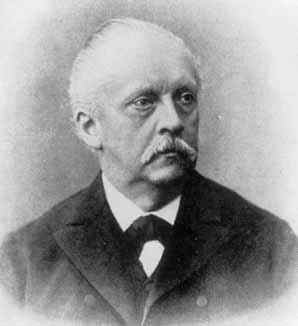Return to computing page for the first course APMA0330
Return to computing page for the second course APMA0340
Return to computing page for the fourth course APMA0360
Return to Mathematica tutorial for the first course APMA0330
Return to Mathematica tutorial for the second course APMA0340
Return to Mathematica tutorial for the fourth course APMA0360
Return to the main page for the first course APMA0330
Return to the main page for the second course APMA0340
Return to the main page for the fourth course APMA0360
Return to Part VI of the course APMA0340
Introduction to Linear Algebra with Mathematica
Glossary
Helmholtz equation

Hermann von Helmholtz (1821–1894) was a German physician and physicist. He contributed to many fields, including physiology, fluid dynamics, the theory of electricity and magnetism, and thermodynamics. His formulation of the principle of conservation of energy influenced a generation of physicists. Among other things, he participated in two of the most significant developments in physics and in the philosophy of science in the 19th century: the proof that Euclidean geometry does not describe the only possible visualizable and physical space, and the shift from physics based on actions between particles at a distance to the field theory. Helmholtz achieved a staggering number of scientific results, including the formulation of energy conservation, the vortex equations for fluid dynamics, the notion of free energy in thermodynamics, and the invention of the ophthalmoscope. His constant interest in the epistemology of science guarantees his enduring significance for philosophy.
Cartesian Coordinates
Our solution should be labeled according to the choice of our constants λ, m, and n; that is,
Circular Cylindrical Coordinates
The original Helmholtz equation, a three-dimensional PDE, has been replaced by three ODEs, Eqs. \eqref{EqHelmholtz.11}, \eqref{EqHelmholtz.12}, and \eqref{EqHelmholtz.13}. A solution of the Helmholtz equation is
Spherical Polar Coordinates
Finally, as an illustration of how the constant m in Eq.\eqref{EqHelmholtz.21} is restricted, we note that φ in cylindrical and spherical polar coordinates is an azimuth angle. If this is a classical problem, we shall certainly require that the azimuthal solution Φ(φ) be single-valued; that is,
- Grigoryan, V, Partial Differential Equations, 2010, University of California, Santa Barbara.
Return to Mathematica page
Return to the main page (APMA0340)
Return to the Part 1 Matrix Algebra
Return to the Part 2 Linear Systems of Ordinary Differential Equations
Return to the Part 3 Non-linear Systems of Ordinary Differential Equations
Return to the Part 4 Numerical Methods
Return to the Part 5 Fourier Series
Return to the Part 6 Partial Differential Equations
Return to the Part 7 Special Functions